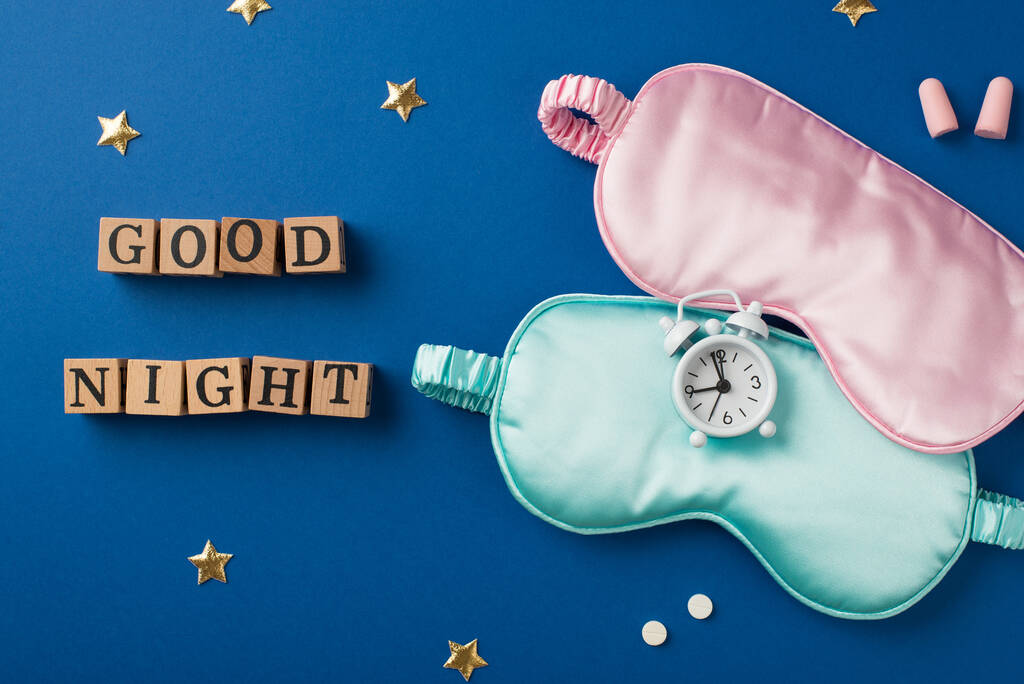Sleep Onset: Sleep Aid Explained
09/13/2023

Welcome, dear reader, to the whimsical world of sleep! A realm where dreams are woven and rest is king. But what happens when the king is elusive? That's where we come in, with our trusty guide on sleep onset and sleep aids. So, put on your pajamas, grab a cup of warm milk, and let's dive into the fascinating world of sleep!
Now, before we embark on this journey, it's important to understand that sleep isn't just a switch that you can flip on and off. It's a complex process that involves various stages and cycles. And one of the most crucial stages is sleep onset. But don't worry, we're here to unravel the mysteries of sleep onset and sleep aids, one yawn at a time!

Understanding Sleep Onset
Imagine you're a train. Your final destination? Dreamland. But before you can get there, you need to leave the station. That's what sleep onset is - the transition from wakefulness to sleep. It's the moment when your brain waves start to slow down, your eyes get heavy, and you begin to drift off into the land of dreams.
But here's the thing. Not all trains leave the station at the same time. Some people can fall asleep as soon as their head hits the pillow, while others might toss and turn for hours. This difference in sleep onset is what often leads people to seek out sleep aids. But before we get into that, let's take a closer look at the science behind sleep onset.
The Science of Sleep Onset
Our brains are like orchestras, with different sections playing different tunes. During wakefulness, the brain is playing a fast, upbeat number. But as we transition to sleep, the tempo slows down. This change in brain activity is what marks the onset of sleep.
But how does this transition happen? Well, it's all thanks to a group of neurons in the hypothalamus known as the ventrolateral preoptic nucleus (VLPO). These neurons act like the conductor of the orchestra, signaling the brain to slow down and prepare for sleep. So, the next time you're drifting off to sleep, remember to thank your VLPO neurons!
Factors Affecting Sleep Onset
Just like how a train can be delayed by various factors, so can sleep onset. Stress, caffeine, and screen time are just a few of the things that can throw a wrench in your sleep schedule. But don't worry, we're not here to just list the problems. We're here to provide solutions!
One of the most effective ways to improve sleep onset is by maintaining a consistent sleep schedule. This helps to regulate your body's internal clock, making it easier for you to fall asleep and wake up at the same times each day. So, try to resist the temptation of that weekend lie-in!
Exploring Sleep Aids
Now that we've covered sleep onset, let's move on to the next station - sleep aids. These are tools, techniques, and substances that can help you fall asleep faster and stay asleep longer. From herbal teas to prescription medications, there's a wide range of sleep aids available. But remember, not all sleep aids are created equal. Some might work like a charm for you, while others might leave you counting sheep all night.
So, how do you find the right sleep aid for you? Well, it's all about understanding your sleep needs and exploring different options. But don't worry, you're not alone in this journey. We're here to guide you through the maze of sleep aids, one wink at a time!
Natural Sleep Aids
First up on our list of sleep aids are the natural ones. These are substances that can help promote sleep without the need for a prescription. Some of the most popular natural sleep aids include melatonin, valerian root, and chamomile tea. But remember, just because they're natural doesn't mean they're harmless. Always consult with a healthcare professional before trying a new sleep aid.
Another type of natural sleep aid is relaxation techniques. This includes practices like meditation, deep breathing, and progressive muscle relaxation. These techniques can help calm the mind and prepare the body for sleep, making it easier for you to drift off into dreamland.
Over-the-Counter Sleep Aids
Moving on to the next category, we have over-the-counter (OTC) sleep aids. These are medications that you can buy without a prescription. They usually contain antihistamines, which can make you feel drowsy and help you fall asleep.
While OTC sleep aids can be effective, they're not meant for long-term use. They can cause side effects like daytime drowsiness, dizziness, and dry mouth. Plus, they can lead to dependence if used too frequently. So, use these sleep aids with caution, and always follow the instructions on the label.
Prescription Sleep Aids
Next up, we have prescription sleep aids. These are medications that you can only get with a prescription from a healthcare professional. They're usually used for short-term treatment of insomnia and other sleep disorders.
Prescription sleep aids work in different ways. Some work by slowing down brain activity, while others work by affecting chemicals in the brain that promote sleep. While these medications can be very effective, they also come with risks. They can cause side effects like daytime drowsiness, memory problems, and even sleep behaviors like sleepwalking. So, they should only be used under the supervision of a healthcare professional.
Behavioral Sleep Aids
Last but not least, we have behavioral sleep aids. These are techniques and strategies that can help improve your sleep habits. They include practices like cognitive behavioral therapy for insomnia (CBT-I), sleep hygiene, and sleep restriction.
CBT-I, for example, is a type of therapy that helps you identify and change thoughts and behaviors that interfere with sleep. Sleep hygiene involves creating a sleep-friendly environment and following a consistent sleep schedule. And sleep restriction involves limiting the amount of time you spend in bed to match the amount of time you're actually asleep. While these techniques might require more effort than popping a pill, they can be very effective and have fewer side effects.
Choosing the Right Sleep Aid
Now that we've covered the different types of sleep aids, you might be wondering - how do I choose the right one? Well, the answer depends on a variety of factors, including your sleep problems, your health status, and your personal preferences.
For example, if you're having trouble falling asleep because of stress, a relaxation technique might be the best option for you. On the other hand, if you're dealing with chronic insomnia, you might benefit from a prescription sleep aid or CBT-I. But remember, it's always best to consult with a healthcare professional before trying a new sleep aid.

Conclusion
And there you have it, dear reader - a comprehensive guide to sleep onset and sleep aids. We hope this journey has been as enlightening for you as it has been for us. Remember, sleep is a journey, not a destination. So, take your time, explore different options, and find the sleep aid that works best for you. Sweet dreams!
And remember, while we've covered a lot in this guide, there's always more to learn about sleep. So, keep exploring, keep asking questions, and keep striving for better sleep. After all, a good night's sleep is the foundation of a healthy, happy life. So, here's to sweet dreams and restful nights!

 Back to Blog
Back to Blog